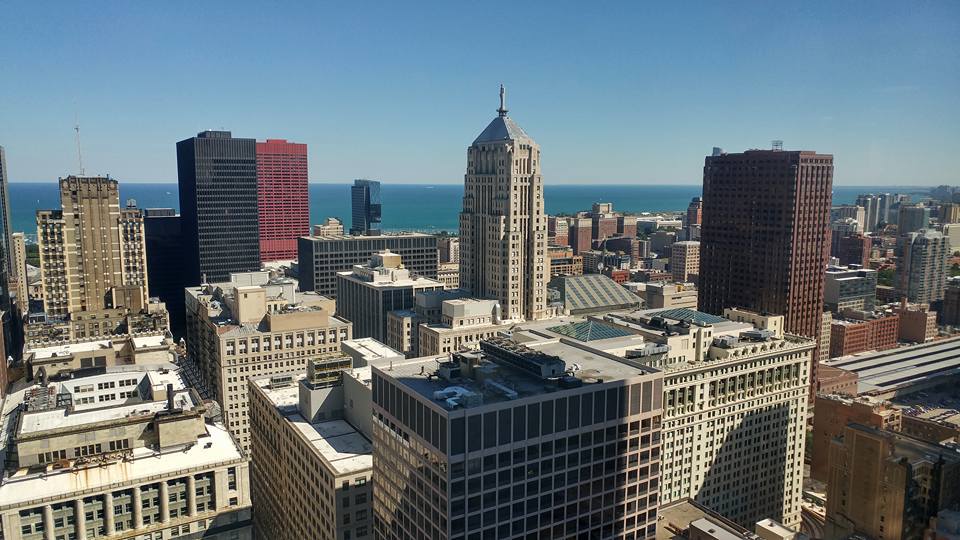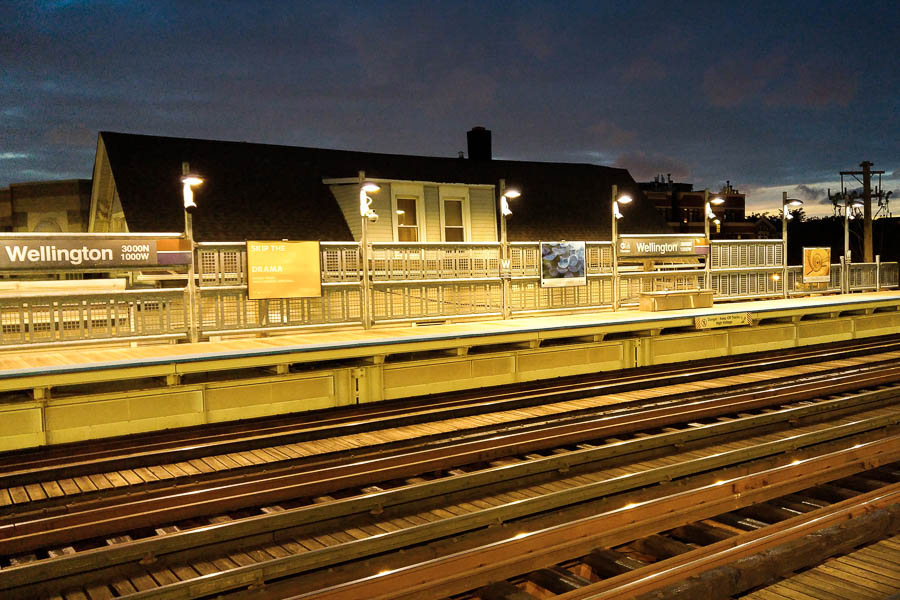Last night's Sox game was more fun than I think I could have there. First, the Sox got 7 runs in the 6th, which kept me in my seat until the game anded. Second, the Sox set the Guinness World Record for most dogs at a sporting event, with 1,122 in attendance:
The Sox needed a minimum of 1,000 dogs in attendance for the record, and the dogs had to remain in their outfield seats for a period of 10 minutes, starting at the top of the third inning, in order for the record to count.
A clock in the outfield counted down the 10 minutes during the third inning, and the Sox announced the record was achieved in the middle of the sixth inning.
“They were a little noisy but it’s kind of fun,” Sox outfielder Adam Eaton said. “It brings a different atmosphere to the ballpark. I think that’s one of the beauties of The Cell, really nothing is off limits.”
Third, the weather was pretty good:

The Cubs, meanwhile, lost to St. Louis last night, keeping their Magic Number at 3 and bringing the Cardinals to half a game behind the Giants for the NL Wild Card. The Cubs play the Cardinals again this afternoon, and I'll be at Wrigley tomorrow night when they beat the Brewers to clinch the division title. I hope.
So...I hate to admit this, but I'm going to US Cellular Field tonight, because my trivia team won a bunch of Sox tickets. This will make me 0-for-3 on paying to get into the place, which I like. And tonight, in a very literal way, the park will go to the dogs:
The White Sox will receive an attendance boost from some canine fans Tuesday when the team hosts its annual “Bark at the Park” event, and they hope it’s enough to set a new Guinness World Record.
The Sox are attempting to set a record for the most dogs at a sporting event when the Sox host the Indians in the second game of a four-game series. They need a minimum of 1,000 dogs in attendance for the record, and the dogs must remain in their outfield seats for a period of 10 minutes, starting at the top of the third inning, in order for the record to count.
A Guinness World Record adjudicator will be on hand to verify the record.
The event is sold out. The event, not the game, mind you; as the Tribune points out, "The Sox announced an attendance of just 12,588 fans for Monday’s 11-4 victory over the Indians, so 1,000 dogs could make up a sizable chunk of the crowd Tuesday."
Oh, and it's supposed to rain.
James Fallows has a long article in the upcoming Atlantic attempting to answer this question:
The most famous story about modern presidential campaigning now has a quaint old-world tone. It’s about the showdown between Richard Nixon and John F. Kennedy in the first debate of their 1960 campaign, which was also the very first nationally televised general-election debate in the United States.
The story is that Kennedy looked great, which is true, and Nixon looked terrible, which is also true—and that this visual difference had an unexpected electoral effect. As Theodore H. White described it in his hugely influential book The Making of the President 1960, which has set the model for campaign coverage ever since, “sample surveys” after the debate found that people who had only heardKennedy and Nixon talking, over the radio, thought that the debate had been a tie. But those who saw the two men on television were much more likely to think that Kennedy—handsome, tanned, non-sweaty, poised—had won.
Historians who have followed up on this story haven’t found data to back up White’s sight-versus-sound discovery. But from a modern perspective, the only surprising thing about his findings is that they came as a surprise. Today’s electorate has decades of televised politics behind it, from which one assumption is that of course images, and their emotional power, usually matter more than words and whatever logic they might try to convey.
Never has the dominance of the image over the word seemed more significant than this year, as the parties and the public prepare for the three general-election debates between Hillary Clinton and Donald Trump that are scheduled to begin September 26 (as it happens, the anniversary of that first Kennedy-Nixon debate) and the one vice-presidential debate between Tim Kaine and Mike Pence, scheduled for October 4.
The whole thing is worth a read. I'm frustrated that I'll be in a rehearsal during the first debate, but I may stay up late after watching it.
At work, I typically sit at an east-facing window on the 35th floor of the Sears Willis Tower. Here's my view:

That means I can often see Michigan, Indiana, and everything in between, including very large boats out on the Lake. For the last half-hour I've watched a huge white thing slowly steam South, wondering what it was. It turns out, there's a website for that. And the boat is, in fact, pretty big:

So the 138-meter Glostrander is puttering southward at 19 km/h towards South Chicago. Good to know. (You can see the boat in the photo above just to the left of the Board of Trade building. It's the white horizontal sliver close to the horizon.)
The Economist has found that craft breweries are inversely correlated with religiosity in the US:
Some states are craftier than others. Atop the list of craft breweries per capita is Vermont, with 44 of them crammed into one of the nation’s smallest and least populated states. In addition to being better liquored, Vermonters are a good bit more godless than the national average. This reflects a broader trend: there is a markedly negative correlation between a state’s religiosity and breweries per person.
Local regulations determine the level of production much more than demographic characteristics such as income or education, says Bart Watson, chief economist of the Brewers Association, a craft-beer trade organisation. And religious legislators may get a bit overzealous. Utah, a state populated with many teetotaling Mormons, strictly limits the strength of draught beers and cocktails.
As you'd expect from that newspaper, they have a cool chart, too.
Usually I just link to articles I haven't read yet. This morning, here's a list of videos friends have posted. (They take longer than articles.)
And, OK, one article: Politico interviewed dozens of people who were involved with getting the president home on 9/11, fifteen years ago today. Their accounts are riveting.
So, a couple weeks ago, I replaced my LG G4 with an LG G5. I thought about getting the Samsung Galaxy 7, but it was $350 more and didn't really have a lot of extra features. Turns out, it did have one extra feature that really my phone doesn't:
The U.S. Consumer Product Safety Commission says owners of the Galaxy Note 7 smartphones should turn them off and stop using them because of the risk that their batteries can explode.
The agency also says it's working with Samsung on an official recall of the phones "as soon as possible" and that it's trying to figure out if the company's replacement Note 7s are an "acceptable remedy."
Samsung last week began a global recall for the phone.
Yikes.
Workers digging London's Crossrail tunnel have helped uncover a 350-year-old mystery about the Great Plague:
[T]he Great Plague...killed 100,000 Londoners (roughly a quarter of the city’s population) around 350 years ago.
Last year, workers constructing a future new ticket hall at Liverpool Street Station unearthed a charnel pit adjoining the old Bedlam Hospital, in which 3,000 skeletons were interred. Now it turns out that some of these skeletons had the answer to a centuries’ old mystery, hidden away in their teeth.
Scientists at Germany's Max Planck Institute took samples from the teeth of 20 of these corpses, and this week confirmed what historians have long suspected but been unable to prove: London's Great Plague was caused by the Yersinia Pestis bacteria, exactly the same pestilence that killed around one-third of Europe's population in the 14th century, under the name the Black Death.
The BBC has more.
I've been meaning to post this photo from July. No story behind it; I just think it's cool.

So far today, the following have crossed my browser:
Back to the mines...